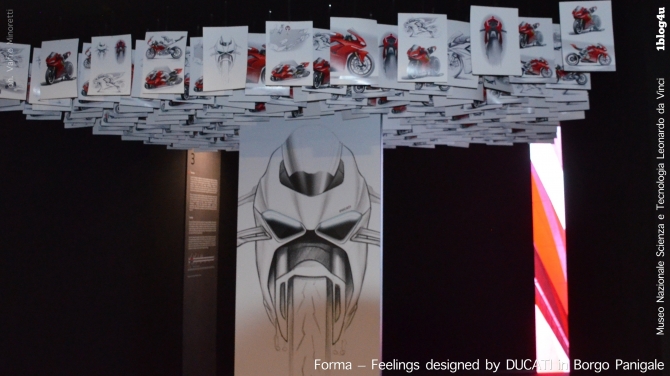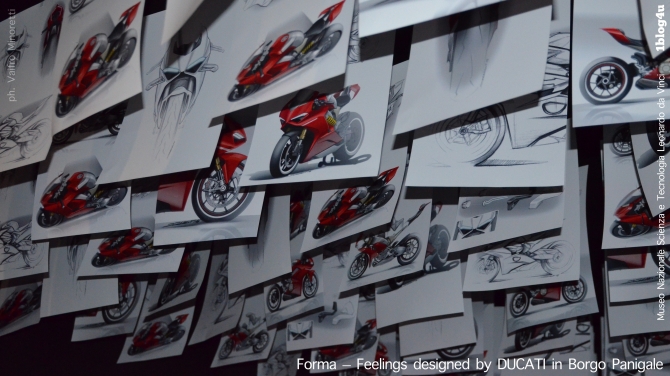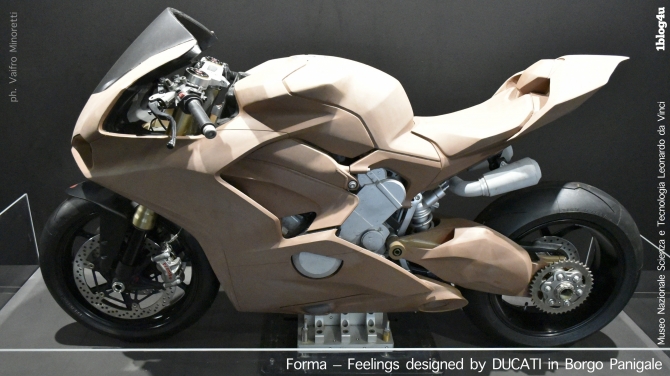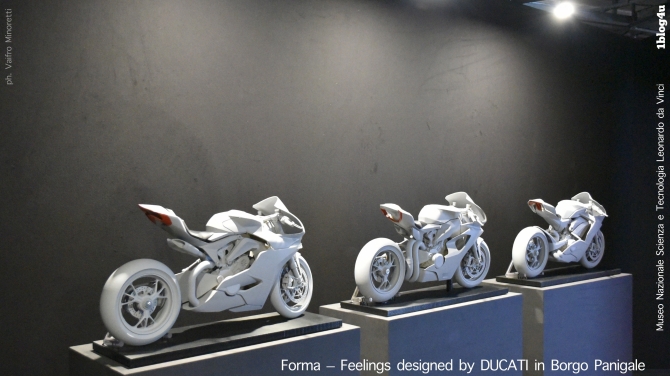On the evening of Monday 15 April, with a private event attended by over 300 people, DUCATI inaugurated its participation in the 2024 edition of the Milan Design Week, the most important moment of the year for the world of design at an international level.
DUCATI fits perfectly into the context of the Fuorisalone with the exhibition "Forma - Feelings designed by Ducati in Borgo Panigale", set up in a place in line with the values of the brand, the Leonardo da Vinci National Science and Technology Museum. The exhibition was created with the aim of accompanying visitors in the discovery of the design process through which all DUCATI motorcycles are created: a magical combination of beauty and high-end technology, performance and emotions, in which form and function work in symbiosis.
Andrea Ferraresi, Director of Strategy & Centro Stile DUCATI: “In DUCATI we consider style and love for beauty as fundamental elements to create emotions and experiences capable of going beyond the pleasure of riding. Our "Reduce to the max" design vision provides a symbiotic integration between form and function, in which each element is essential and the superfluous has no space. To bring our style principles to Milan Design Week is perfectly aligned with our business strategy and gives further value to our approach to design."
The exhibition “Forma – Feelings designed by Ducati in Borgo Panigale” is structured through a journey in seven stages, which represent the fundamental steps by means of which the designers of the Centro Stile DUCATI and the engineers of the R&D department transform the idea of a motorcycle into a true work of art. The DUCATI model used to describe this process is the super sports bike par excellence in the Borgo Panigale range: the Panigale V4.
The immersive itinerary of the exhibition opens with a space dedicated to the "Brief", the document that provides the designers with the general guidelines with which to begin the stylistic creation of each motorcycle. The following "Analysis & Concepts" phase is a flow of research in which the designer's thoughts range between art, music, places, colours and shapes, composing a moodboard from which the personality and character of each new DUCATI model are born. The third step of the exhibition is dedicated to the "Sketches", the means by which the DUCATI designers put all their ideas on paper. The most effective proposals are then materialized in 3D CAD models which allow the creation of the first physical models, the so-called "Proportion Models", from which the best solution is selected. Having reached this point, the next three steps lead to the actual birth of a new DUCATI motorcycle, through the "Clay Model", a 1:1 scale model refined by hand like a real sculpture using highly mouldable synthetic clay, the "Master Model", a resin model that allows you to perfectly highlight the lines and surfaces and evaluate any refinements, to then arrive at the "Clinic Model", which is a faithful representation of the final product (painting included) as well as the final step before going into production.
The narrative of this process in seven stages within "Forma - Feelings designed by Ducati in Borgo Panigale" was built in such a way as to be fascinating and involving. It allowed the public to access never-before-seen content made available by the Centro Stile Ducati and speak directly with the designers present. Furthermore, at the exit of the exhibition, visitors will be able to enjoy a display with six motorcycles from the Panigale family:
-Panigale V4 Bautista 2023 World Champion Replica,
-Panigale V4 Bezzecchi 2023 Racing Replica,
-Panigale V4 SP2,
-Panigale V4 R,
-Panigale V2,
as well as a Panigale V4 S with which to experience the thrill of stepping onto a DUCATI.
For DUCATI, design is not just about creativity, style or beautiful motorcycles but about creating feelings. (ducati.it)











